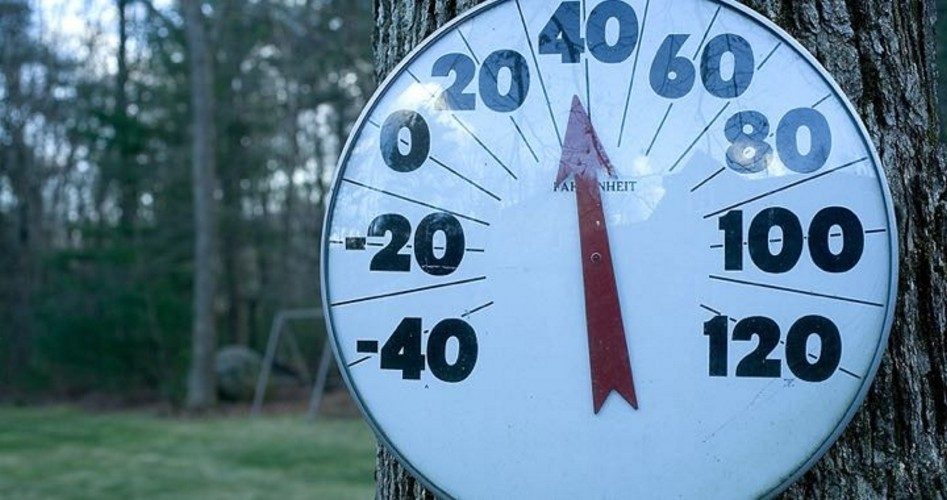
In his new e-book, An Inconvenient Deception: How Al Gore Distorts Climate Science and Energy Policy, climatologist Roy Spencer dismantles and debunks climate alarmist and former Vice President Al Gore’s new movie, An Inconvenient Sequel, the follow-up to Gore’s hugely successful 2006 propaganda film, An Inconvenient Truth. Spencer’s book is currently outselling Gore’s companion book to his new film by a wide margin. As of Monday, the Amazon Seller’s rank for Spencer’s book was 244th, which included a number-one ranking in the science and math category. The rank for Gore’s offering was 9,775th.
Spencer, a climatologist at the University of Alabama in Huntsville, is not the typical “global-warming denier.” He has a B.S. in atmospheric science from the University of Michigan and a Ph. D. in meteorology from the University of Wisconsin. He has worked with NASA as a senior scientist for climate studies and has published several peer-reviewed papers on the topic of climate science. Despite his scientific credentials, Spencer explains the complex issues of climate science in an engaging way that the layman can appreciate and understand.
While Spencer doesn’t deny that humans may have some role in the observed warming of the Earth, he believes that propogandists such as Gore vastly exaggerate mankind’s effect on the vast and complex global climate system, which is not yet entirely understood. “There is no ‘fingerprint’ of human causation versus natural causation,” Spencer states. “The evidence supporting human causation is largely circumstantial.”
{modulepos inner_text_ad}
Spencer, who once testified for Gore on the Senate Energy and Natural Resources Committee, theorizes that Gore, and others like him in the climate-change business, have developed an almost cult-like devotion to the theory of anthropogenic global warming, as witnessed by Gore’s 1992 tome Earth in the Balance. “In my reading of the book at the time, I felt it had a rather heavy nature-worship feel to it,” Spencer wrote. “Gore views nature as being inherently fragile, which is not a scientific concept.”
Spencer calls Gore’s description of climate change and his fanatical adherence to the belief that man is the cause of all of nature’s woes a “mish-mash of untruths, half-truths and misrepresentations.” Further, even if Gore were completely correct about the so-called crisis, the solutions proposed by the former vice president to deal with it are not necessarily the wisest course of action. “Even if Gore were 100 percent correct, how we then should proceed is not at all obvious,” Spencer asserts.
While revisiting An Inconvenient Truth, one thing Spencer explained was a little-known tenet of the global-warming theory. Though climate scientists know with certainty that certain thermostatic control mechanisms (i.e., clouds and precipitation) respond to natural rises in CO2 levels, such as from volcanoes or forest fires — hence limiting changes in the Earth’s temperature — most climate scientists assume that this is not the case with man-made CO2 emissions. Yet, how would nature know the difference between sources of CO2? Spencer also catalogs several of the unfulfilled prophecies of Gore’s first film on global warming, among them the complete meltdown of the glacier on Mt. Kilimanjaro (didn’t happen) and the disappearance of summer sea ice in the Arctic Ocean by 2014 (not even close).
In his take-down of Gore’s latest global-warming film, Spencer decries the use of deceptive imagery, such as images of massive chunks of ice falling into the ocean. The implication in this footage is that global warming is the cause of it. What Gore fails to mention is that this is a natural, yearly occurrence. Every summer, even in atypically cool ones such as 2017, there is a certain amount of melting, thus some ice loss. This is how we get icebergs.
Additionally, Spencer points out that receding glaciers in Alaska and Canada have been revealing ancient tree stumps in abundance. This proves beyond the shadow of a doubt that the world was much warmer roughly a thousand years ago, during Medieval Warm Period. These ancient stumps are strong evidence that the world goes through natural warming and cooling cycles that man is not responsible for.
An Inconvenient Deception goes on to describe Gore’s deceptive use of graphs, statistics, and naturally occurring phenomena as “proof” of anthropogenic global warming. He also rightly points out the former vice president’s stunning hypocrisy on the issue, wanting everyone else in the world to reduce their own standard of living while he flies around in private jets and maintains multiple, energy-hogging mansions.
Spencer also takes to task some of the celebrity scientists who have weighed in on the climate-change issue, most notably Neil de Grasse-Tyson and Bill Nye. “Our current crop of pop-science icons should be largely ignored for information outside their specific areas of expertise,” Spencer wrote.
An Inconvenient Deception contains sound scientific thinking, written by an actual climate scientist, in language that is comprehensible to non-scientific minds. It is a worthy read for anyone who might question the panicked voices we hear each day on the mainstream media.




